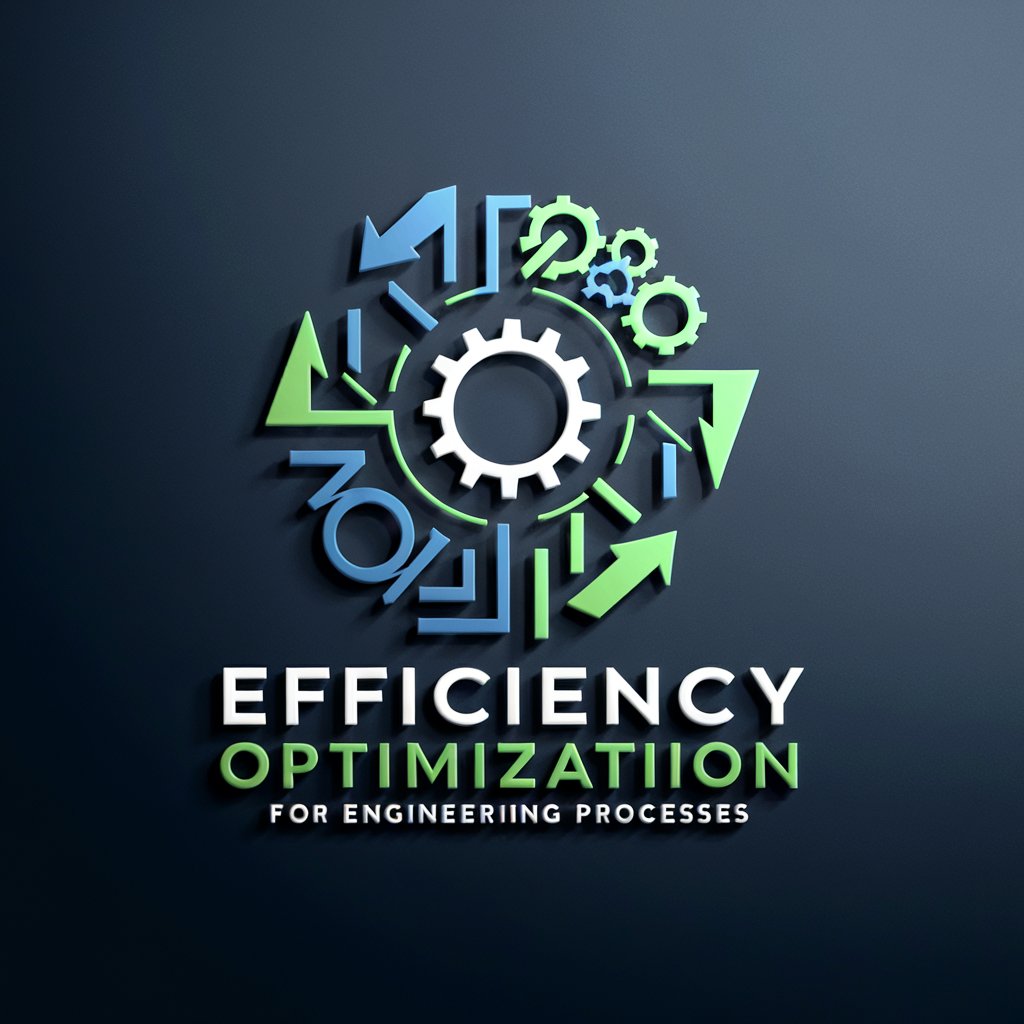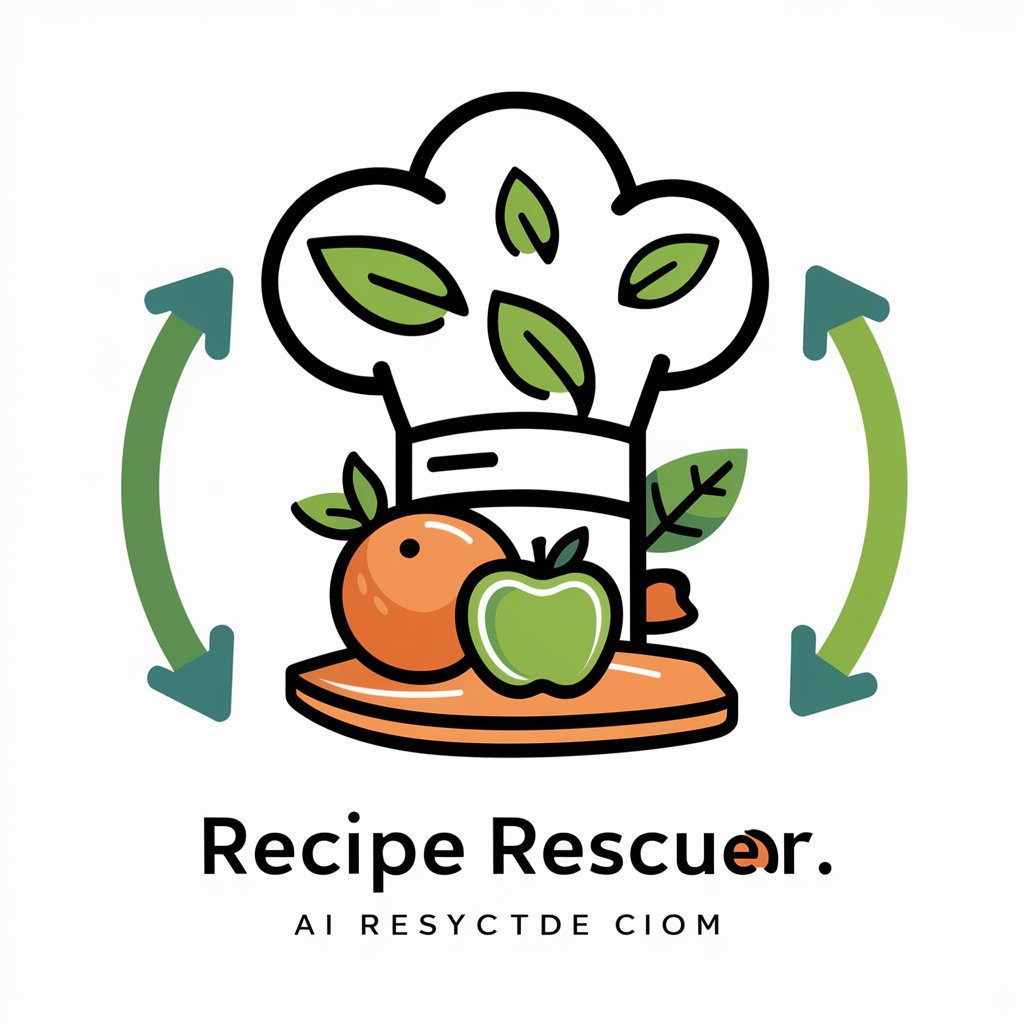Efficiency Optimization for Engineering Processes - Engineering Process Optimization

Welcome! Let's optimize your engineering workflows for maximum efficiency.
Streamline Engineering with AI
Analyze the current workflow in our engineering department to identify potential bottlenecks.
Propose strategies for enhancing productivity in a mechanical engineering design process.
Evaluate the cost-effectiveness of our current manufacturing process and suggest improvements.
Identify and recommend tools for optimizing project management in an engineering environment.
Get Embed Code
Overview of Efficiency Optimization for Engineering Processes
Efficiency Optimization for Engineering Processes is designed to enhance productivity and reduce costs within engineering workflows. It focuses on identifying and resolving bottlenecks, suggesting technological upgrades, and implementing best practices that streamline operations. This service is crucial in environments where engineering precision and efficiency drive business success. For instance, in a manufacturing setting, analyzing the production line to identify steps where automation could replace manual labor can significantly reduce cycle times and labor costs, improving overall throughput. Powered by ChatGPT-4o。

Core Functions of Efficiency Optimization for Engineering Processes
Workflow Analysis
Example
In a software engineering firm, the workflow analysis might involve examining the development lifecycle to identify redundant processes or outdated methods that slow down software release times.
Scenario
Implementing continuous integration/continuous deployment (CI/CD) practices to automate testing and deployment tasks which previously were performed manually, thereby reducing the release cycle from weeks to days.
Bottleneck Identification
Example
In an automotive assembly line, bottleneck identification would target specific stations in the assembly process that consistently lag, impacting overall production efficiency.
Scenario
Applying lean manufacturing principles to redesign the layout of the assembly line, introducing more versatile tools or automation technologies, or training staff for multi-skilled roles to enhance flexibility and throughput.
Cost-Reduction Strategies
Example
For a civil engineering company working on large infrastructure projects, cost reduction might involve optimizing the procurement and logistics of materials to reduce waste and transportation costs.
Scenario
Using advanced predictive analytics to forecast the exact quantities of materials needed and timing for delivery, thereby minimizing holding costs and reducing waste from spoilage or theft.
Technological Upgrades
Example
In a semiconductor manufacturing plant, technological upgrades could involve introducing advanced robotics to handle micro-assembly processes that are too delicate or precise for human workers.
Scenario
Deploying state-of-the-art automated micro-assembly stations which improve precision and speed, while reducing the incidence of defects and rework.
Target User Groups for Efficiency Optimization for Engineering Processes
Manufacturing Firms
Manufacturing firms often deal with complex production lines and high operational costs. Efficiency optimization can help these firms streamline processes, implement automation, and improve production cycle times, leading to significant cost savings and increased productivity.
Software Engineering Companies
Software companies that need to rapidly develop and deploy software can benefit from process optimization to enhance collaboration among developers, reduce time-to-market, and maintain quality, particularly in agile environments.
Infrastructure and Construction Companies
These companies manage large, capital-intensive projects that benefit from optimized logistics, resource allocation, and timeline management. Efficiency services can significantly impact project costs and deadlines through strategic planning and resource management.

Guidelines for Using Efficiency Optimization for Engineering Processes
Initial Access
Visit yeschat.ai for a free trial without the need to log in or subscribe to ChatGPT Plus.
Identify Processes
Determine which engineering processes you need to optimize. Common areas include design, manufacturing, or project management workflows.
Collect Data
Gather relevant data regarding the selected processes. This includes time tracking, resource allocation, and output quality metrics.
Analysis
Use the tool to analyze the collected data and identify bottlenecks or inefficiencies in the processes.
Implement Solutions
Apply the tool's recommendations to streamline operations, reduce costs, and enhance productivity. Regularly review the impact and adjust strategies as needed.
Try other advanced and practical GPTs
Recipe Rescuer | Reduces Food Waste
Transform leftovers with AI

Study Buddy
Empower Your Learning with AI

Gaffer: Lighting Assist
AI-Powered Cinematic Lighting Simplified

jon taffer
Revolutionizing Hospitality with AI

GPT Advisor
Smart AI-powered Guidance at Your Fingertips

Fridge Zero
Turn Ingredients into No-Waste Meals with AI

Maths Mate
Powering Learning with AI

Prof de maths universitaire
AI-powered solutions for advanced math learning

Amphibians and Reptiles of Colombia
Explore Colombia's Amphibians and Reptiles with AI

Amphibian Expert
Unlocking the Secrets of Amphibian Voices

Sally: Persona Analyst
Crafting Personas with AI Precision

Sally
Empower your English with AI

Detailed Q&A on Efficiency Optimization for Engineering Processes
What are the key features of Efficiency Optimization for Engineering Processes?
This tool provides data-driven insights, identifies inefficiencies, suggests optimizations, and tracks the effects of implemented changes in engineering workflows.
Can this tool integrate with existing enterprise systems?
Yes, it is designed to integrate seamlessly with various enterprise systems, including ERP and project management software, to enhance data collection and process analysis.
How does this tool handle data security?
The tool employs robust security measures, including encryption and compliance with international data protection regulations, to ensure that all process data remains secure.
Is there any training required to use this tool effectively?
Basic training is recommended to familiarize users with the tool's features and capabilities. Comprehensive support and documentation are also provided for a smooth learning curve.
What makes this tool unique compared to other process optimization solutions?
It stands out by offering specialized algorithms designed specifically for engineering processes, coupled with the ability to adapt to a wide range of engineering disciplines and project scales.
